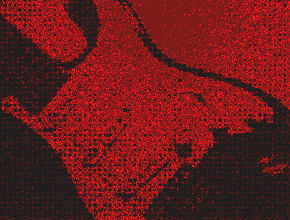“How Much Math is in Math Rock? Riffs, Progressive Rhythm, and Embodied Music Theory” is a paper I presented at the Society for Music Theory conference in November 2020. SMT happened to be an online-only conference because of COVID-19, so I had to record a video version of my talk to post online. Normally I wouldn’t bother posting about a conference paper, but since I already have a video recording and everything, I thought I might as well put it up here!
You can view the 20-minute video here. Also, here’s a copy of the slides if you want to scrutinize the examples.
I’ll be presenting the next stage of this project at the PROGECT 2021 conference, which is also scheduled to be online. Feel free to email me if you’re interested in a copy of that talk. s s hudson at u dot northwestern dot edu.
Abstract:
This paper explores embodied experiences of “metrical constructedness” (Macan 1997), using a new theoretical tool called “motional conceptual models” to analyze the motion experienced in progressive rock’s riffs. Prog rock/metal is often associated with “mathematical” complexity of odd time signatures and polyrhythms. But this complexity rhetoric leaves some mysteries, including: the use of such rhythms by non-prog bands; or Meshuggah’s claim that “there is no mathematical approach” in their music; or online arguments about whether Metallica’s …And Justice For All (AJFA, 1988) is “prog-influenced,” when the album is mostly in duple meter and contains few polyrhythms.
Riffs are not just sequences of notes, but motions experienced by performers and listeners (Fast 2001). My “motional conceptual models” represent one experience of a riff’s motion, framing that shape as a prototype category to explain how it can be recognized despite variations (see “conceptual models,” Zbikowski 2002). These “motional conceptual models” show how manipulations of riffs can lead to manipulated perceived motion—providing a unified theory for “ABAC Additive Metrical Process” in Dream Theater (McCandless 2013), truncated riffs by Meshuggah (Pieslak 2007), Meshuggah riffs that begin “in media res” (Lucas 2018), and riff fragmentations I observe in Metallica’s AJFA. Changes in riff shape can thus be perceived as interrupting the normal looping of meter, and this impression of artificial intervention is one possible explanation for Macan’s “constructedness.” This embodied cognition approach to riffs also demonstrates how it is possible to write rhythmically “progressive” rock and metal rhythms by feel, with no math required.
